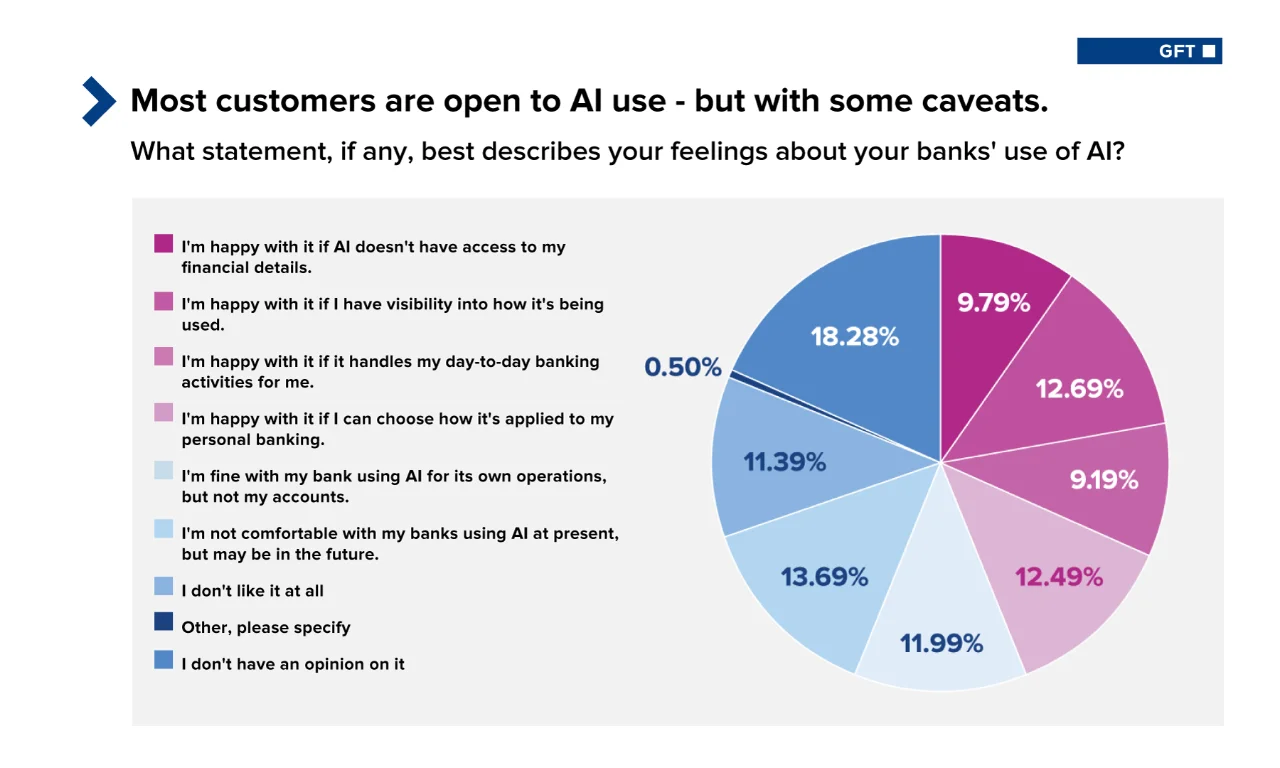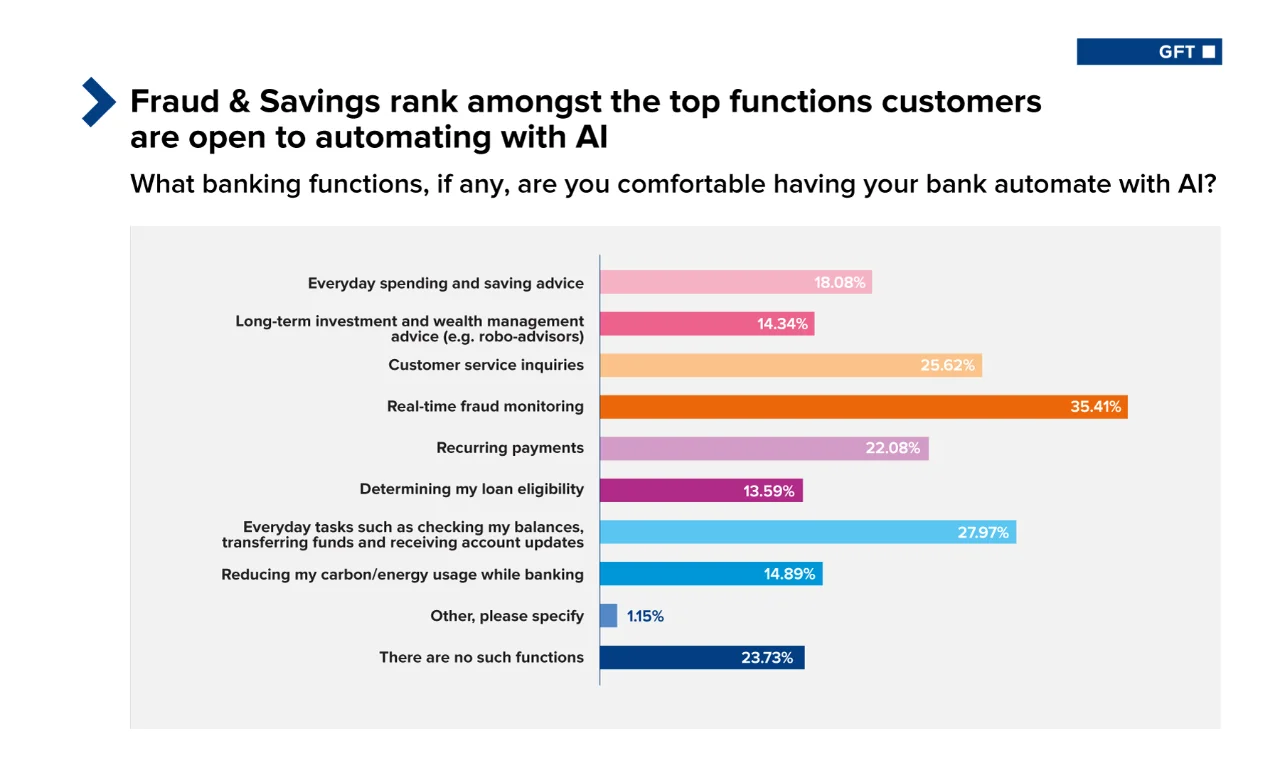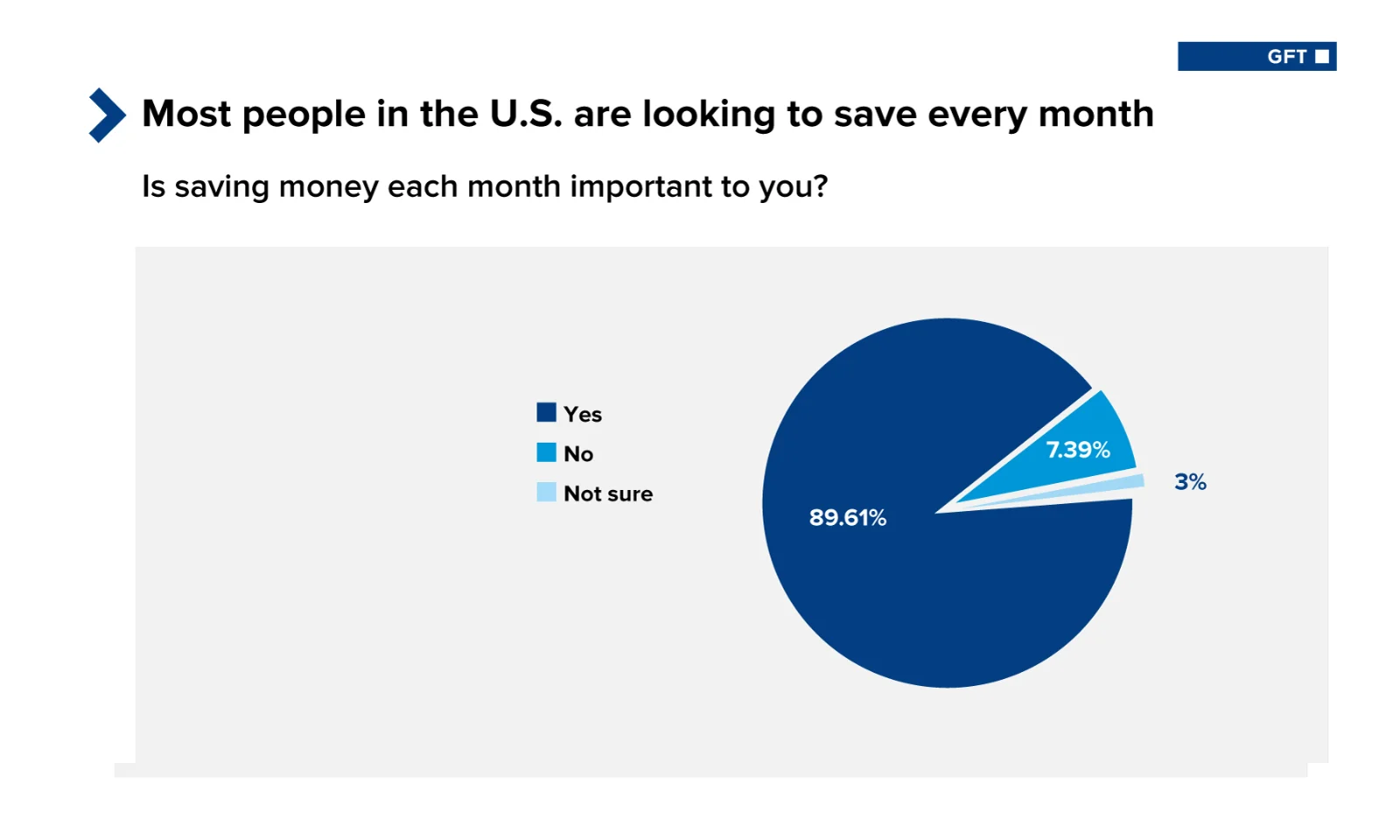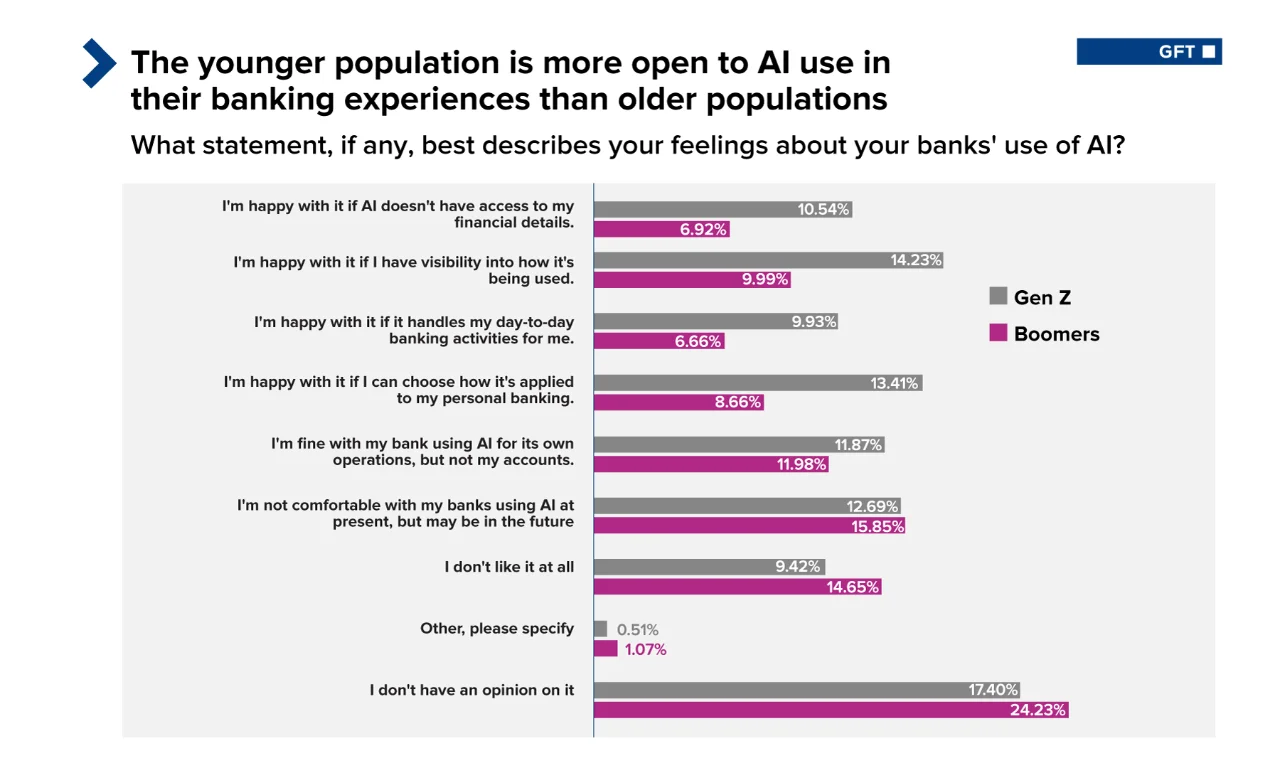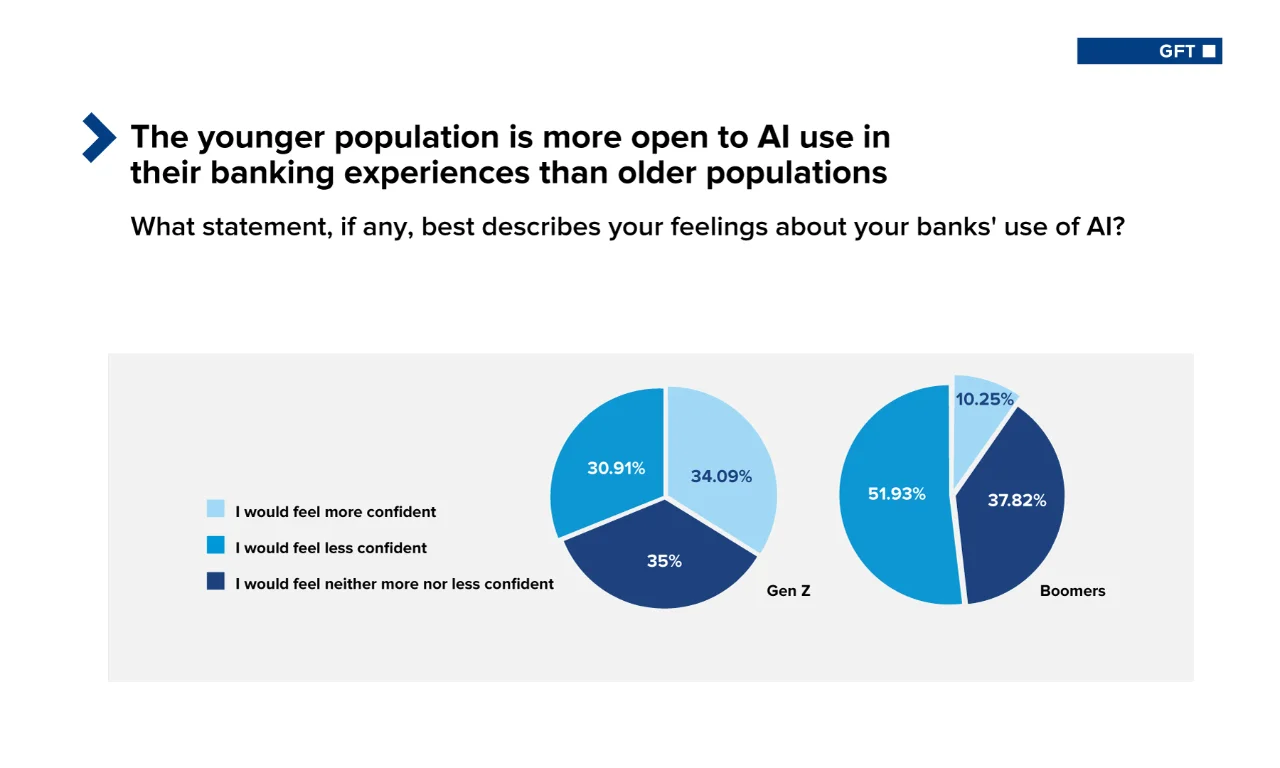- About us
- News
- GFT press releases
- GFT U.S. Banking Disruption Index
GFT U.S. Banking Disruption Index

New York, New York (June 13, 2024)—U.S. banking customers are warming up to the idea of artificial intelligence (AI), with some parameters. The Banking Disruption Index from global digital transformation company GFT finds that 44% of U.S. consumers say they are happy with AI being used within their personal banking experience, as long as banks allow them visibility into how it’s being used. They also have strong opinions about which banking functions AI should be involved with.
Fintechs and neobanks have been consistently releasing new AI innovations for consumers. While banks might not be able to move as fast as their digital challengers to roll out new AI capabilities, they can still move strategically if they pinpoint the most high-value use cases. According to GFT’s new yearly report, using AI to enhance aspects of consumers’ everyday banking and keeping them protected from cyber threats are applications consumers are more likely to embrace--depending on their age.
- GFT surveyed 2,002 U.S. consumers to understand their boundaries when it comes to AI in personal banking. It then analyzed its findings to identify areas banks should prioritize to best cater to users, as well as maintain market share.
Consumers Are Leaning Heavily Into Practical Applications of AI in Banking
While GFT found that customers stateside are open to AI in banking, it also revealed that they are not yet ready for artificial intelligence to expand too far beyond the simplification and automation of day-to-day banking capabilities. The report reveals that to retain consumers’ trust and satisfaction, traditional banks should focus on enhancing AI solutions based on the following consumer priorities:
- Following 2023’s surge in fraud, consumers are turning to AI. When asked what features they were most open to using in their day to day banking, the majority of Americans chose real time fraud monitoring (35%). AI in fraud monitoring presents an opportunity for banks and consumers to better protect money and accounts following last year’s surge in fraudulent transactions.
- Consumers are focused on trying to save money in 2024. Ninety percent (90%) of U.S. citizens are looking to save money each month - and nearly a third want banking AI to help them reach those goals. Saving advice closely follows fraud monitoring as the second most chosen AI capability consumers are happy with (32%), which encompasses both everyday spending and saving as well as long term investment and wealth management.
- Make way for AI money managers. Consumers want AI to help them with their everyday banking to do list, with 28% calling out tasks such as checking balances, transferring funds and receiving account updates as something they would like automated.
- Gen Z is open to AI but Boomers are wary. There is a distinct split in sentiment around AI between the younger and older generations. While respondents aged 18 to 24 were amenable to AI in banking depending on the use cases, respondents aged 55 and up were three times more likely to shut down the idea of AI use at banks entirely.
“Retaining consumers’ business is no longer just a matter of digital transformation for banks, it’s one of AI implementation. But in order to maintain their long-term trust and satisfaction, banks need to understand where their priorities lie. While it may seem that digitally native competitors would have a leg up in the AI-race, consumers’ banking wishlist of fraud detection, banking advice, and other day to day tasks are all capabilities that traditional banks are more than capable of enhancing with AI. Bringing these optimized experiences to consumers, combined with legacy institutions' long established security regulations, empowers traditional banks to not only maintain market share but also establish a strong initial foundation with consumers. This will allow them to scale securely moving forward.”
